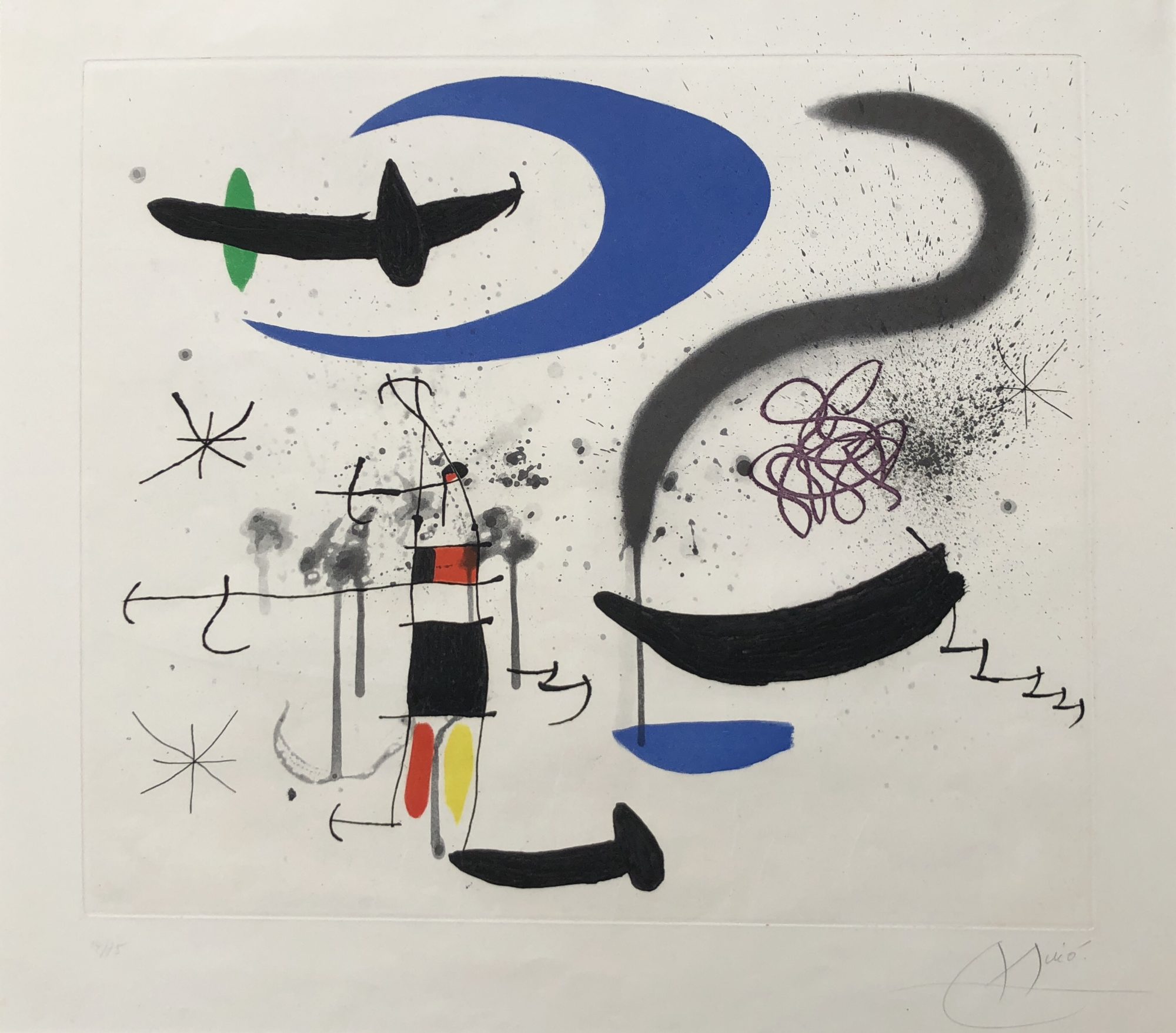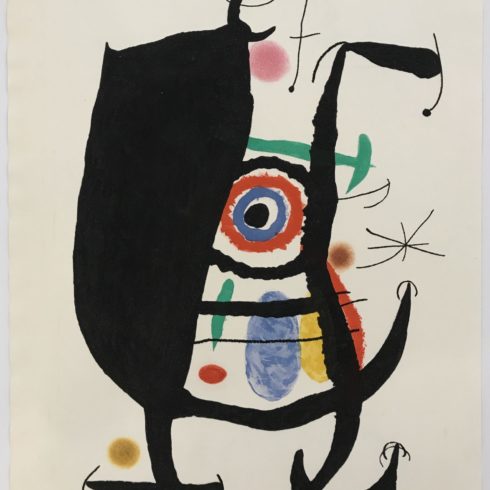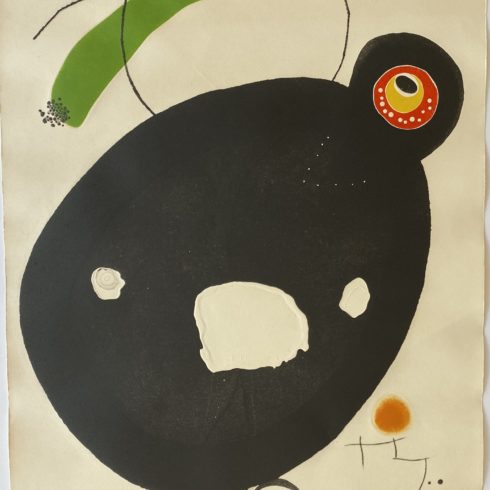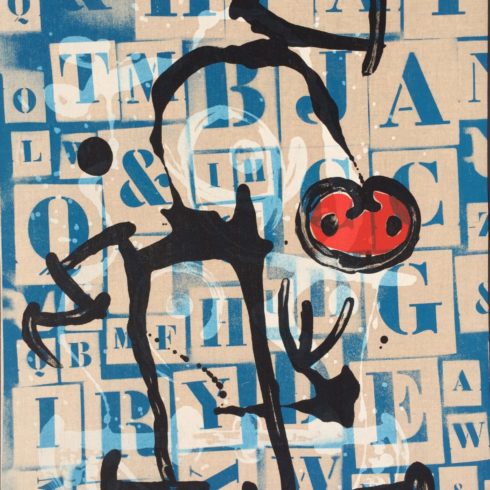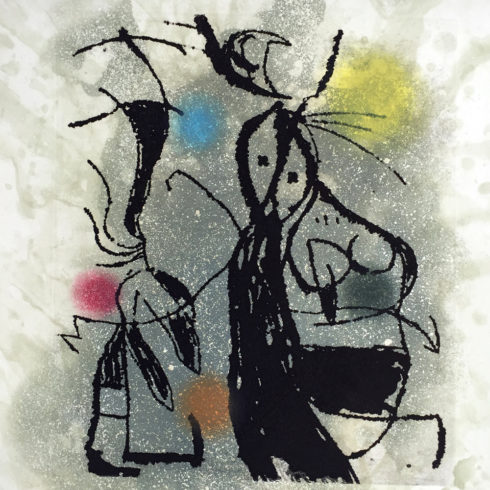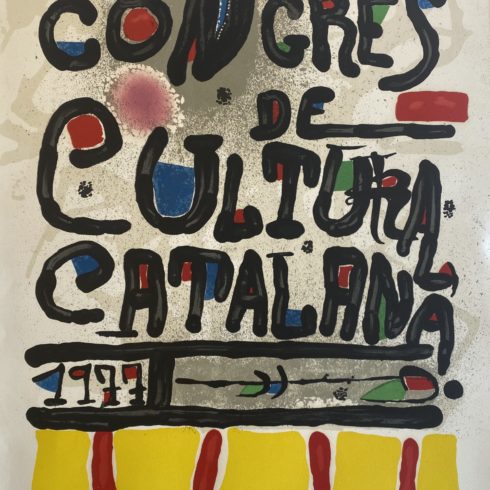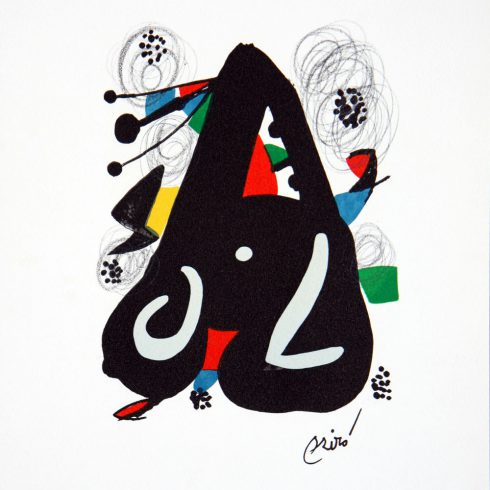L’Escalier de la Nuit (M. 536)
L’Escalier de la Nuit (M. 536), 1970 by Joan Miro is a Aquatint print with Carborundum signed in the lower right and numbered in the lower left in an edition of 75. This piece was published by Maeght, Paris and printed by Arte Adrien Maeght, Paris in M.536.
Joan Miró was a widely considered one of the leading Surrealists, although he was never officially part of the group. He pioneered a wandering linear style of Automatism — a method of “random” drawing that attempted to express the inner workings of the human psyche. Miró rejected the constraints of traditional paintings by creating works “conceived with fire in the soul but executed with clinical coolness,” as he once said. He used color and form in a symbolic rather than literal manner. His compositions combine abstract elements with recurring motifs such as birds, eyes, and the moon. “I try to apply colors like words that shape poems, like notes that shape music,” he said. Miró has inspired many artists, most significantly Arshile Gorky, whose bold linear abstractions proved a foundational influence on Abstract Expressionism.
| Title | L’Escalier de la Nuit |
|---|---|
| Medium | Aquatint, Carborundum |
| Year | 1970 |
| Edition | 75 |
| Catalogue Raisonné | M.536 |
| Signature | Signed, numbered |
| Size | 24.5 x 32 (in) 61.5 x 81.5 (cm) |
| Price | SOLD |
Description
L’Escalier de la Nuit (M. 536), 1970 by Joan Miro is a Aquatint print with Carborundum signed in the lower right and numbered in the lower left in an edition of 75. This piece was published by Maeght, Paris and printed by Arte Adrien Maeght, Paris in M.536.
Joan Miró was a widely considered one of the leading Surrealists, although he was never officially part of the group. He pioneered a wandering linear style of Automatism — a method of “random” drawing that attempted to express the inner workings of the human psyche. Miró rejected the constraints of traditional paintings by creating works “conceived with fire in the soul but executed with clinical coolness,” as he once said. He used color and form in a symbolic rather than literal manner. His compositions combine abstract elements with recurring motifs such as birds, eyes, and the moon. “I try to apply colors like words that shape poems, like notes that shape music,” he said. Miró has inspired many artists, most significantly Arshile Gorky, whose bold linear abstractions proved a foundational influence on Abstract Expressionism.
In 1924, Miró joined the Surrealist group. The already symbolic and poetic nature of Miró’s work, as well as the dualities and contradictions inherent to it, fit well within the context of dream-like automatism espoused by the group. Much of Miró’s work lost the cluttered chaotic lack of focus that had defined his work thus far, and he experimented with collage and the process of painting within his work so as to reject the framing that traditional painting provided. This antagonistic attitude towards painting manifested itself when Miró referred to his work in 1924 ambiguously as “x” in a letter to poet friend Michel Leiris.[21] The paintings that came out of this period were eventually dubbed Miró’s dream paintings.
Miró did not completely abandon subject matter. Despite the Surrealist automatic techniques that he employed extensively in the 1920s, sketches show that his work was often the result of a methodical process. Miró’s work rarely dipped into non-objectivity, maintaining a symbolic, schematic language. This was perhaps most prominent in the repeated Head of a Catalan Peasant series of 1924 to 1925. In 1926, he collaborated with Max Ernst on designs for ballet impresario Sergei Diaghilev. With Miró’s help, Ernst pioneered the technique of grattage, in which he troweled pigment onto his canvases.
L’Escalier de la Nuit (M. 536), 1970 by Joan Miro
Additional information
| Title | L’Escalier de la Nuit |
|---|---|
| Medium | Aquatint, Carborundum |
| Year | 1970 |
| Edition | 75 |
| Catalogue Raisonné | M.536 |
| Signature | Signed, numbered |
| Size | 24.5 x 32 (in) 61.5 x 81.5 (cm) |
| Price | SOLD |


